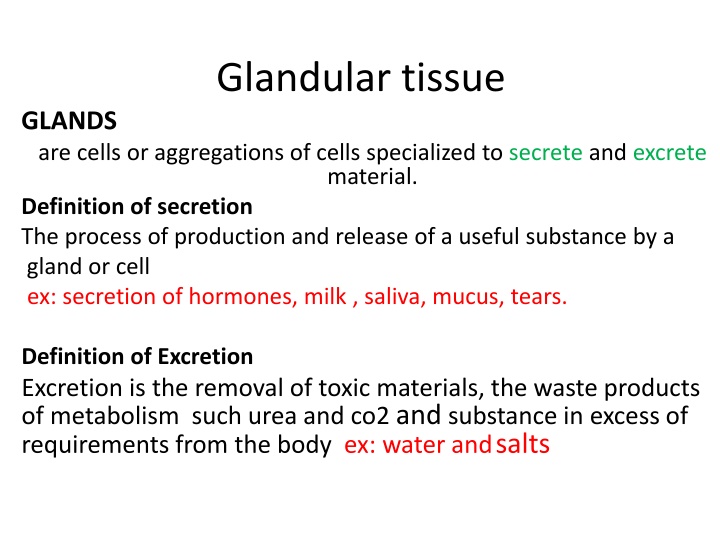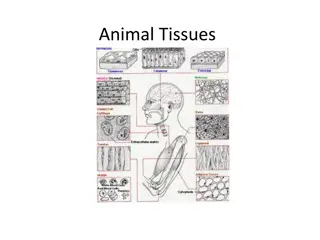Glandular Tissue and Glands Classification
Glandular tissue consists of specialized cells that secrete and excrete materials. Glands are classified into endocrine and exocrine glands based on how their products are released. Exocrine glands can further be categorized by cell number and duct branching. They include unicellular and multicellular glands, as well as simple and compound glands with various structures like tubular and alveolar. Understanding glandular tissue and gland classification is crucial for comprehending their functions and physiological roles within the body.
Download Presentation

Please find below an Image/Link to download the presentation.
The content on the website is provided AS IS for your information and personal use only. It may not be sold, licensed, or shared on other websites without obtaining consent from the author.If you encounter any issues during the download, it is possible that the publisher has removed the file from their server.
You are allowed to download the files provided on this website for personal or commercial use, subject to the condition that they are used lawfully. All files are the property of their respective owners.
The content on the website is provided AS IS for your information and personal use only. It may not be sold, licensed, or shared on other websites without obtaining consent from the author.
E N D
Presentation Transcript
Glandular tissue GLANDS are cells or aggregations of cells specialized to secrete and excrete material. Definition of secretion The process of production and release of a useful substance by a gland or cell ex: secretion of hormones, milk , saliva, mucus, tears. Definition of Excretion Excretion is the removal of toxic materials, the waste products of metabolism such urea and co2 and substance in excess of requirements from the body ex: water andsalts
Classification of the glands Glands are divided according to how their products are released. Endocrine glands :secrete substances that circulate through the blood stream. These glands lack a duct system. ex hormones, Exocrine glands: secrete their products through a duct onto an outer surface of the body, (skin, gastrointestinal tract etc.).
Exocrine glands can be classified according to cell Number : 1.Unicellular Glands: consist of a single secretory cell ex: goblet cells 2. Multicellularglands:are composed of more than one cell, The end pieces of the gland contain the secretory cells. Exocrine glands can be classified according to the presence or absence of branching of the duct elements. First:- Simple glands: unbranched duct
A- Simple tubular glands: 1-Straight tubular glands. Single, straight Found in the stomach and intestine. 2-Coiled tubular glands: coiled, found in sweat glands. 3-Branched tubular glands: multiple tubular, found in the stomach, mouth, tongue and esophagus. B-Simple alveolar glands 1-Unbranched alveolar glands . Found along the urethra. 2-Branched alveolar glands, found in sebaceous glands In the skin.
Second:-Compound glands :branched duct 1-Compound tubular glands: multiple, found n in kidney tubule. 2-Compound Alveolar glands: Multiple. Located in the mammary glands. 3-Compound Tubuloalveolar Some tubular, some alveolar. Found in salivary glands, and respiratory passages.























